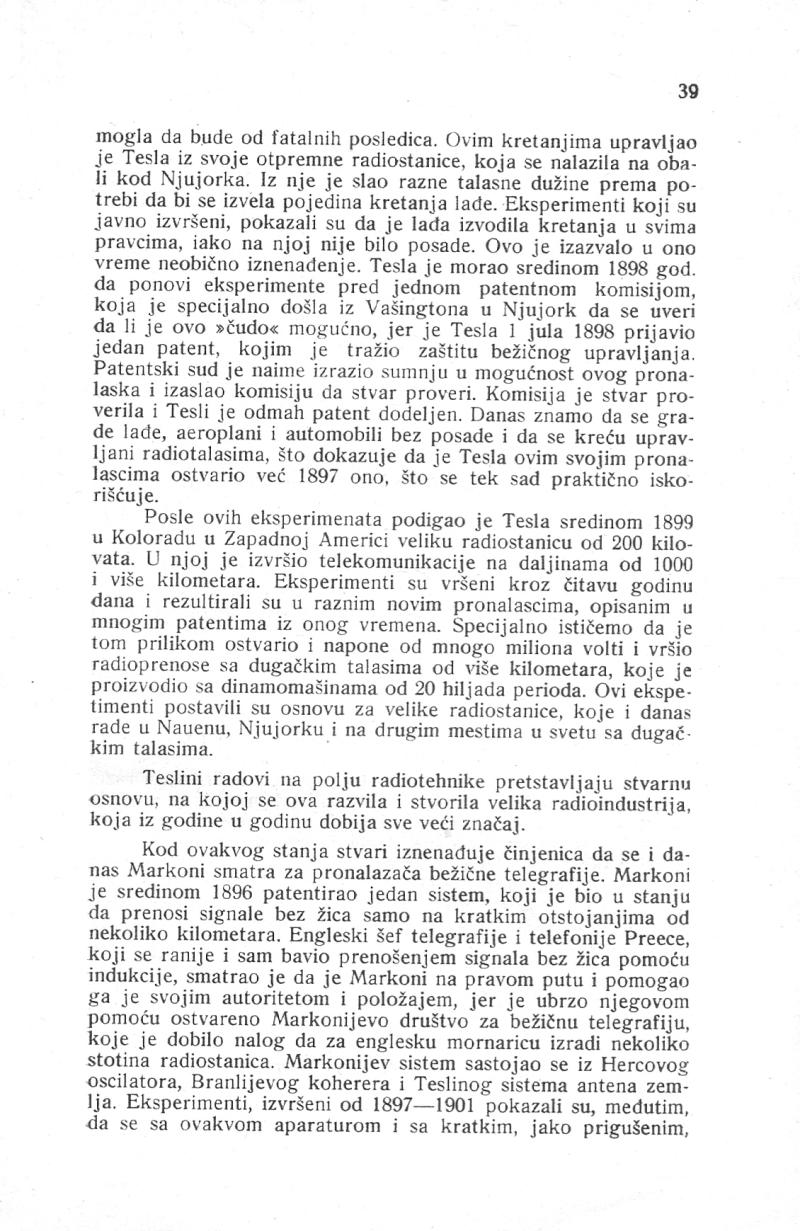
Nikola Tesla Books
have fatal consequences. Tesla controlled these movements from his transmitting radio station, located near New York. From there, he sent various wavelengths as needed to execute specific movements of the boat. Publicly conducted experiments showed that the boat performed movements in all directions, even though there was no crew on board. This caused quite a sensation at that time. In mid-1898, Tesla had to repeat the experiments before a patent commission, specially sent from Washington to New York to verify the feasibility of this âmiracle.â Tesla had applied for a patent on July 1, 1898, seeking protection for wireless control. The Patent Office expressed doubts about the feasibility of this invention and sent a commission to investigate. The commission verified the experiment, and Tesla was promptly granted the patent. Today, we know that unmanned ships, airplanes, and cars are built and move controlled by radio waves, proving that Tesla achieved in 1897 what is now practically utilized.
After these experiments, in mid-1899, Tesla built a large radio station of 200 kilowatts in Colorado, Western America. He conducted telecommunications over distances of 1000 or more kilometers. The experiments took place throughout the year and resulted in various new inventions described in numerous patents of that time. It is worth noting that during this time, Tesla achieved voltages of many millions of volts and conducted radio transmissions with long waves of several kilometers, produced with dynamos of 20 thousand cycles. These experiments laid the foundation for large radio stations that still operate today in Nauen, New York, and other places worldwide, using long waves.
Teslaâs work in the field of radio technology represents the real foundation on which this field developed, giving rise to a significant radio industry that gains importance each year.
Given this state of affairs, it is surprising that Marconi is still considered the inventor of wireless telegraphy today. In the mid-1896, Marconi patented a system capable of transmitting signals without wires over short distances of several kilometers. The English head of telegraphy and telephony, Preece, who had previously experimented with wireless signal transmission using induction, believed Marconi was on the right track and supported him with his authority and position. Shortly afterward, Marconiâs Wireless Telegraph Company was established, commissioned to build several hundred radio stations for the English navy. Marconiâs system consisted of Hertzâs oscillator, Branlyâs coherer, and Teslaâs earth antenna system. However, experiments conducted from 1897 to 1901 showed that with such apparatus and short, heavily-damped
